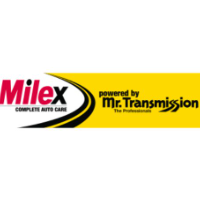Understanding The Check Engine Light Flashing: Causes And Solutions
The check engine light is a small but significant indicator on your car's dashboard that can cause anxiety and uncertainty when it starts flashing. Ignoring this warning sign may lead to severe consequences for your vehicle's health and your wallet. In this article, we will delve into the reasons behind a flashing check engine light flashing the steps you can take to address the issue promptly.
What Does a Flashing Check Engine Light Mean?
When your check engine light is flashing, it is indicating a critical issue that requires immediate attention. Unlike a steady light, which suggests a less urgent problem, a flashing light signals a severe and potentially damaging malfunction. Ignoring a flashing check engine light can result in further damage to your vehicle and may lead to expensive repairs.
Common Causes of a Flashing Check Engine Light:
Catalytic Converter Issues: A malfunctioning catalytic converter can trigger a flashing check engine light. This vital component helps reduce emissions, and its failure can result in increased pollution and engine damage.
Misfiring Engine: A misfiring engine occurs when one or more cylinders in your vehicle's engine fail to ignite properly. This can be caused by issues such as faulty spark plugs, a malfunctioning ignition coil, or a clogged fuel injector.
Oxygen Sensor Malfunction: The oxygen sensor monitors the amount of oxygen in the exhaust gases and helps regulate fuel injection. A malfunctioning oxygen sensor can lead to poor fuel efficiency and increased emissions, triggering the check engine light.
Faulty Ignition System: Issues within the ignition system, such as a malfunctioning ignition module or distributor, can result in a flashing check engine light. Proper ignition system functioning is crucial for the engine's performance.
Loose or Damaged Gas Cap: Sometimes, a loose or damaged gas cap can trigger the check engine light. Ensuring that your gas cap is securely tightened can be a quick and easy solution to this issue.
Steps to Address a Flashing Check Engine Light:
Pull Over Safely: If your check engine light is flashing while driving, it's crucial to pull over safely as soon as possible. Continuing to drive with a flashing light can lead to further damage.
Check Gas Cap: Before panicking, check your gas cap. Ensure it is securely tightened, and if it's damaged, consider replacing it. This simple step might resolve the issue.
Inspect Spark Plugs and Wires: Spark plugs and wires play a vital role in the ignition process. Inspect them for wear or damage, and replace any faulty components.
Visit a Professional Mechanic: If the flashing check engine light persists after checking the gas cap and basic components, it's time to consult a professional mechanic. They can use diagnostic tools to identify the specific issue and recommend appropriate repairs.
Address the Underlying Issue: Once the problem is identified, address it promptly. Whether it's a misfiring engine, faulty catalytic converter, or malfunctioning oxygen sensor, timely repairs can prevent further damage and ensure your vehicle's longevity.
In conclusion, a flashing check engine light is a serious warning that demands immediate attention. By understanding the common causes and taking prompt action, you can prevent extensive damage to your vehicle and minimize repair costs. Regular maintenance and addressing issues promptly will keep your car running smoothly and help you avoid unexpected breakdowns on the road.
